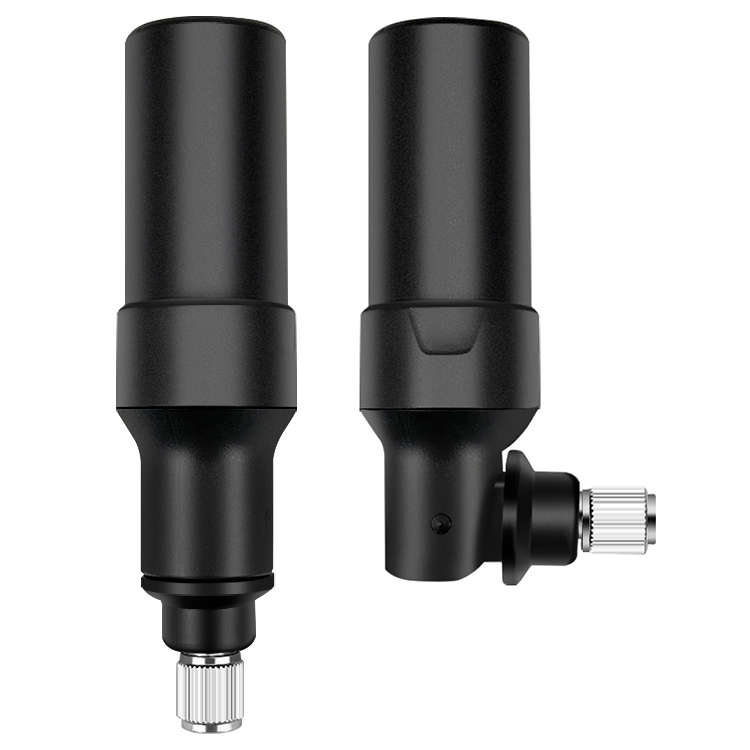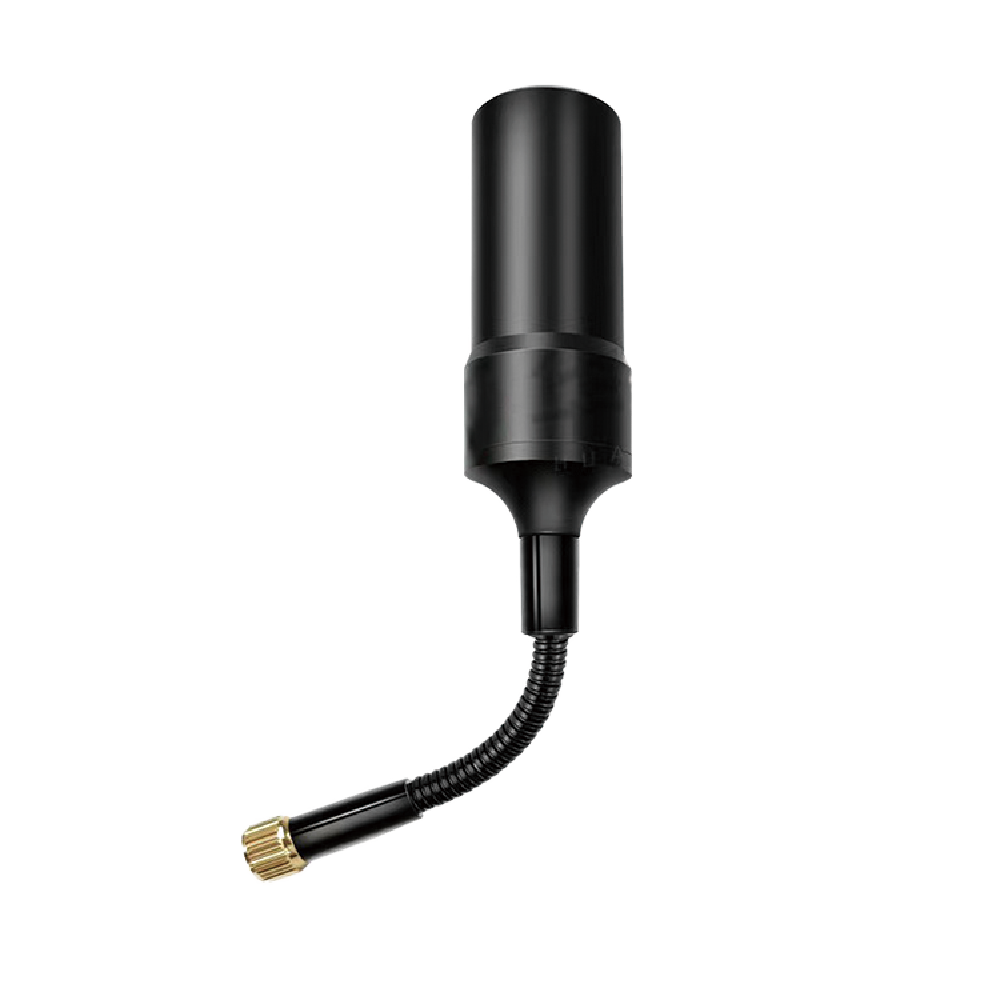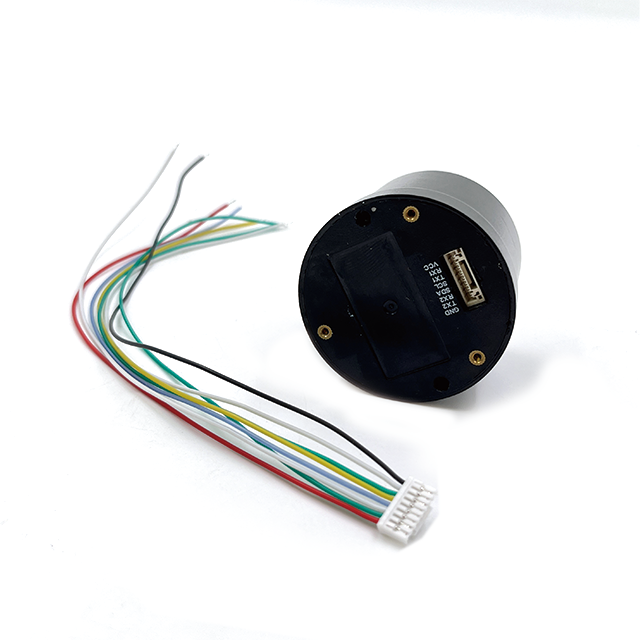Historical Context
The development of GNSS antennas for drones has paralleled advancements in both GNSS technology and drone design. Initially, drones relied on larger, bulkier antennas that limited their maneuverability and payload capacity. As drones became more compact and versatile, the need for smaller, more efficient antennas became apparent. This led to the development of compact GNSS antennas that could be seamlessly integrated into the drone's structure without compromising performance. Today, these antennas are a standard feature in most commercial and industrial drones, supporting a wide range of applications from aerial photography to precision agriculture.
Importance in Drone Operations
Accurate navigation is essential for the safe and efficient operation of drones. A compact GNSS drone antenna enables drones to receive signals from multiple GNSS constellations, such as GPS, GLONASS, Galileo, and BeiDou, enhancing positioning accuracy and reliability. This is particularly important in challenging environments where signal obstructions or interference may occur, such as urban areas or dense forests. Additionally, compact GNSS antennas support advanced drone functionalities, including autonomous flight, waypoint navigation, and geofencing, which rely on precise positioning data.
Market Landscape
The market for compact GNSS drone antennas has grown significantly in recent years, driven by the increasing adoption of drones across industries. Manufacturers offer a diverse range of products tailored to different drone types and applications, from consumer drones for recreational use to professional drones for surveying, mapping, and inspection tasks. Competition among vendors has spurred innovation, leading to continuous improvements in antenna performance, size, and cost-effectiveness. As the drone industry continues to expand, the demand for high-quality, compact GNSS antennas is expected to rise further.
Antenna Element Design
The core of a compact GNSS drone antenna is its radiating element, which must be designed to resonate at the frequencies used by multiple GNSS constellations. This typically involves creating a multi-band antenna structure capable of receiving signals in the L1 (1575.42 MHz), L2 (1227.60 MHz), and other relevant frequency bands. Common design approaches for compact antennas include microstrip patch antennas, planar inverted-F antennas (PIFAs), and helical antennas, each offering unique advantages in terms of size, bandwidth, and radiation pattern.
Microstrip Patch Antennas: These antennas are popular for their low profile, ease of fabrication, and compatibility with printed circuit board (PCB) technology. They can be designed to operate at multiple frequencies by using techniques such as stacking patches or employing multilayer substrates.
Planar Inverted-F Antennas (PIFAs): PIFAs are compact and offer good radiation characteristics, making them suitable for integration into small drone platforms. They can be tuned to resonate at multiple frequencies by adjusting their physical dimensions and ground plane configuration.
Helical Antennas: Helical antennas provide a helical radiation pattern that can be optimized for omnidirectional coverage, ensuring reliable signal reception from satellites in all directions. They are often used in applications where space is limited, and a compact, efficient antenna is required.
Material Selection
The choice of materials is crucial in ensuring the antenna's performance, durability, and weight efficiency. The radiating element and supporting structures are typically made from lightweight metals, such as aluminum or copper-clad laminates, which provide excellent electrical conductivity while minimizing weight. The antenna housing, which protects the internal components from environmental factors, is often constructed from rugged plastics or composites that offer resistance to impact, moisture, and UV radiation. In some cases, the housing may be sealed to provide additional protection against dust and water ingress.
Miniaturization Techniques
Achieving a compact form factor while maintaining high performance is a key challenge in designing GNSS drone antennas. Several miniaturization techniques are employed to address this challenge:
High-Permittivity Substrates: Using substrates with high dielectric constants allows for smaller antenna elements, as the wavelength is effectively reduced within the material. This enables the design of compact antennas that still operate efficiently at the desired frequencies.
Meander Line Structures: Meander line antennas incorporate serpentine patterns into the radiating element, increasing its electrical length without significantly increasing its physical size. This technique is often used to achieve multi-band operation in compact antennas.
Fractal Geometry: Fractal antennas utilize self-similar patterns to create complex geometries that can resonate at multiple frequencies. These antennas offer a high degree of miniaturization and can be designed to fit into tight spaces while maintaining good performance.
Integration with Drone Platform
Compact GNSS drone antennas must be carefully integrated into the drone's structure to ensure optimal performance and reliability. This involves considering factors such as antenna placement, orientation, and ground plane effects. Antennas are often mounted on the top surface of the drone to maximize satellite visibility and minimize signal obstructions. The ground plane, which is typically provided by the drone's chassis or PCB, plays a crucial role in determining the antenna's radiation pattern and gain. Proper integration ensures that the antenna operates efficiently and provides accurate positioning data to the drone's navigation system.
Environmental Testing and Certification
Before being deployed in the field, compact GNSS drone antennas undergo rigorous environmental testing to verify their performance under simulated real-world conditions. These tests may include exposure to extreme temperatures, humidity, vibration, shock, and salt spray (for marine applications). Compliance with international standards, such as MIL-STD-810 (Environmental Engineering Considerations and Laboratory Tests) and RTCA DO-160 (Environmental Conditions and Test Procedures for Airborne Equipment), provides assurance of the antenna's durability and reliability in demanding operating environments.
Signal Reception
The primary function of a compact GNSS drone antenna is to receive electromagnetic signals transmitted by satellites in multiple GNSS constellations. These signals contain information about the satellite's position, time, and other navigational data. The antenna's design ensures that it resonates at the frequencies of interest, converting the incoming electromagnetic energy into electrical signals that can be processed by the drone's GNSS receiver.
Multi-Constellation Signal Processing
Once the antenna has received the signals, they are transmitted to the GNSS receiver via a coaxial cable or other suitable interface. The receiver processes these signals, extracting the navigational data from each constellation and performing complex calculations to determine the drone's position, velocity, and time. Multi-constellation support allows the receiver to use signals from multiple satellite systems simultaneously, improving positioning accuracy and reliability. This is particularly important in environments where signals from a single constellation may be obstructed or degraded.
Antenna Pattern and Gain
The antenna pattern, or radiation pattern, describes how the antenna radiates or receives energy in different directions. Compact GNSS drone antennas are designed to have a hemispherical or omnidirectional pattern, ensuring that they can receive signals from satellites in all directions above the horizon. The antenna's gain, which is a measure of its ability to amplify the received signal, is optimized to provide sufficient signal strength for the GNSS receiver to process, even in challenging conditions. High-gain antennas can improve signal reception in areas with weak satellite signals, such as urban canyons or dense forests.
Polarization Matching
GNSS signals are typically right-hand circularly polarized (RHCP). Compact GNSS drone antennas are designed to match this polarization, ensuring maximum signal coupling and minimizing the effects of multipath interference, which can occur when signals reflect off surfaces such as buildings, trees, or the ground. Proper polarization matching is essential for achieving optimal antenna performance and accurate positioning data.
Environmental Adaptation
Compact GNSS drone antennas are designed to adapt to a wide range of environmental conditions. Their robust construction and sealing ensure that they can withstand the effects of temperature extremes, humidity, vibration, and shock without compromising performance. This adaptability is crucial for maintaining reliable GNSS signal reception in various applications and operating environments, from high-altitude flights to maritime operations.
-
Advantages
Lightweight and Compact: The small size and low weight of compact GNSS drone antennas make them ideal for integration into drones, where space and payload capacity are limited. This allows drones to carry additional equipment or sensors without sacrificing performance.
Enhanced Positioning Accuracy: By receiving signals from multiple GNSS constellations, these antennas improve positioning accuracy through better geometry and redundancy. This is particularly important for applications that require high precision, such as surveying and mapping.
Increased Reliability: Multi-constellation support reduces dependency on a single satellite system, enhancing reliability in case of constellation-specific outages or interference. This ensures that drones can continue to operate safely and effectively in challenging environments.
Improved Signal Reception: Compact GNSS antennas are designed to have good radiation patterns and high gain, ensuring reliable signal reception even in areas with weak satellite signals. This is crucial for maintaining accurate positioning data during flight.
Cost-Effective: Advances in antenna technology and manufacturing processes have made compact GNSS drone antennas more cost-effective, making them accessible to a wider range of drone applications and users.
Challenges
Design Complexity: Achieving a compact form factor while maintaining high performance and multi-constellation support increases the design complexity of the antenna. This requires sophisticated design techniques and careful optimization of the antenna element and feed network.
Signal Interference: In urban environments or areas with dense foliage, multipath interference can degrade the performance of compact GNSS antennas. Effective filtering and signal processing techniques are required to mitigate this issue and ensure accurate positioning data.
Thermal Management: The compact size of these antennas can make thermal management challenging, as heat dissipation may be limited. This can affect the antenna's performance and reliability, particularly during prolonged operation in high-temperature environments.
Integration Challenges: Integrating compact GNSS antennas into the drone's structure requires careful consideration of factors such as antenna placement, orientation, and ground plane effects. Improper integration can lead to reduced performance or signal obstructions.
Standardization and Compatibility: Ensuring compatibility with various GNSS receivers and constellations can be challenging, as different systems may use different signal formats or modulation schemes. This requires careful design and testing to ensure seamless integration and operation.
-
Applications
Aerial Photography and Videography: Compact GNSS drone antennas enable precise positioning and stabilization, allowing drones to capture high-quality aerial images and videos with minimal blurring or distortion. This is particularly important for professional photographers and videographers who require accurate and reliable positioning data.
Surveying and Mapping: Drones equipped with compact GNSS antennas are widely used for land surveying, topographic mapping, and 3D modeling applications. The high positioning accuracy provided by these antennas ensures that the collected data is accurate and reliable, supporting informed decision-making in various industries.
Precision Agriculture: In agriculture, drones are used for crop monitoring, soil analysis, and precision spraying tasks. Compact GNSS antennas enable drones to navigate accurately over fields, ensuring that data is collected or treatments are applied at the correct locations. This improves crop yield and reduces the use of resources such as water and fertilizers.
Infrastructure Inspection: Drones equipped with compact GNSS antennas are used for inspecting bridges, buildings, power lines, and other infrastructure. The antennas provide precise positioning data, allowing drones to navigate close to structures and capture detailed images or videos for analysis. This improves safety and efficiency by reducing the need for manual inspections.
Search and Rescue: In search and rescue operations, drones can be used to quickly locate missing persons or assess disaster areas. Compact GNSS antennas enable drones to navigate accurately in challenging environments, providing real-time positioning data to rescue teams and supporting efficient coordination of search efforts.
Future Trends
Integration with 5G and IoT: As 5G networks and the Internet of Things (IoT) continue to expand, compact GNSS drone antennas will play a crucial role in providing precise positioning for connected drones and smart infrastructure. This will enable new applications such as autonomous drone delivery, smart city management, and environmental monitoring.
Advanced Miniaturization Techniques: Ongoing research into advanced miniaturization techniques, such as metamaterials and 3D printing, will enable the development of even smaller and more efficient GNSS antennas. This will further enhance the integration of these antennas into drones and other compact devices.
Enhanced Multi-Path Mitigation: Improved multi-path interference mitigation techniques will enhance the performance of compact GNSS antennas in urban and other challenging environments. This will improve positioning accuracy and reliability, supporting a wider range of drone applications.
Support for New GNSS Constellations: As new GNSS constellations, such as India's NavIC and Japan's QZSS, become operational, compact GNSS antennas will evolve to support these additional signals. This will expand their global coverage and utility, making them even more versatile and valuable.
Increased Use of Machine Learning: Machine learning algorithms may be employed to optimize antenna performance in real-time, adapting to changing environmental conditions and improving signal reception. This will enhance the robustness and reliability of compact GNSS antennas in various applications.
Conclusion
Compact GNSS drone antennas represent a critical advancement in drone technology, enabling precise navigation and positioning in a wide range of applications. Their lightweight, compact design, combined with high performance and multi-constellation support, makes them ideal for integration into drones of all types and sizes. Despite challenges related to design complexity, signal interference, and thermal management, ongoing innovations in antenna technology are addressing these issues and driving the continued evolution of compact GNSS antennas. As the drone industry continues to expand and integrate with other technologies, such as 5G and IoT, compact GNSS drone antennas will remain at the forefront of precision navigation, supporting a safer, more connected, and efficient world. The future of these antennas is bright, with exciting advancements on the horizon that will further enhance their capabilities and open up new possibilities for drone applications.




































































 Language
Language
 En
En Cn
Cn Korean
Korean

 Home >
Home > 







 18665803017 (Macro)
18665803017 (Macro)













